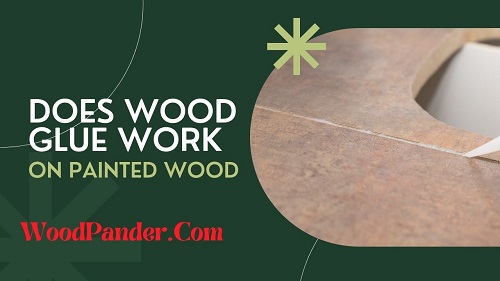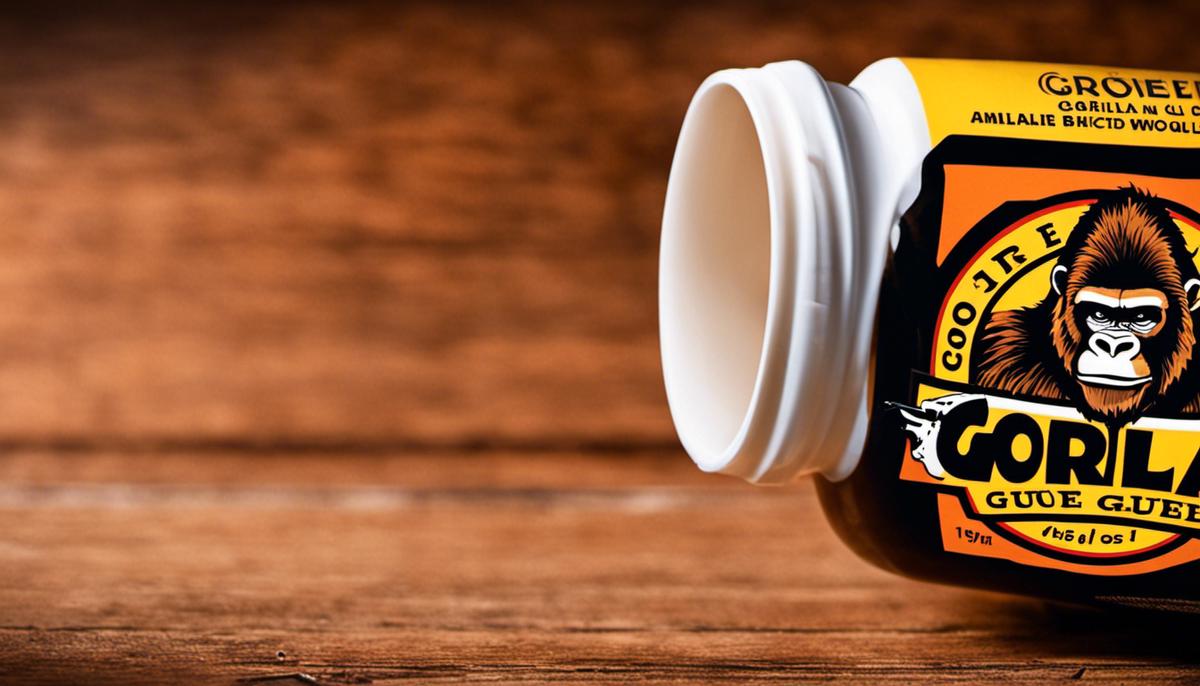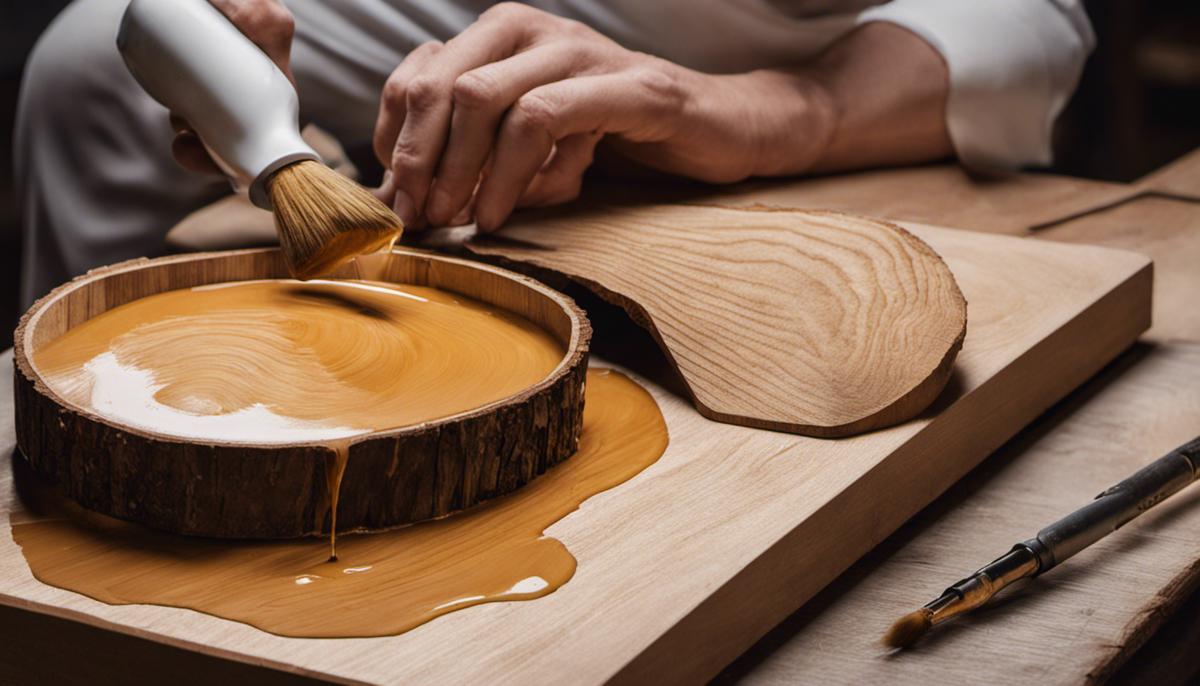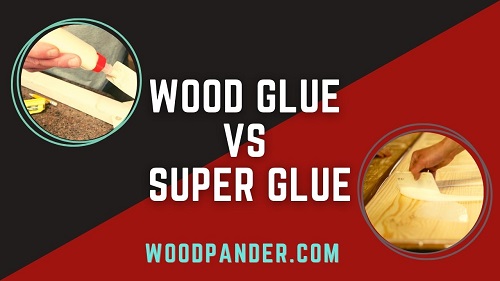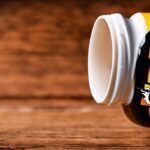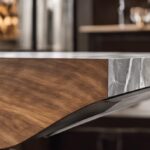Understanding the nature of different materials and their compatibility with various adhesives is crucial when undertaking a project or repair. In this exploration, the focus is on melamine, a popular material with a plastic-like nature that can pose challenges for adhesion.
The resilient and nonporous characteristics of melamine necessitate a deep understanding of its properties and its interaction with different types of glues, such as wood glue.
Furthermore, delving into the composition and adhesive capabilities of various types of wood glue provides insight into why they may or may not be effective on surfaces like melamine.
Wood glue does not bond well with melamine. Melamine is a smooth, non-porous material that doesn’t provide a good surface for wood glue to grip onto. For a strong bond, it’s advisable to use a melamine adhesive specifically designed for bonding with this type of surface, as it will provide a more secure and durable connection.
Does Wood Glue Bond with Melamine
| Aspect | Wood Glue Bond with Melamine |
|---|---|
| Adhesion Strength | Moderate to Good |
| Surface Preparation | Requires Sanding or Scuffing for Improved Bond |
| Bond Durability | Good for Regular Use, but Not Suitable for Extreme Conditions |
| Drying Time | Typically 30 Minutes to 24 Hours, Depending on Glue Type |
| Temperature Range | Suitable for Most Indoor Temperatures |
| Water Resistance | Limited Resistance; May Weaken with Prolonged Exposure |
| Chemical Resistance | Sensitive to Harsh Chemicals; Avoid Exposure |
| Flexibility | Limited Flexibility; Brittle Over Time |
| Recommended Use | Suitable for Interior Furniture, Cabinetry, and Joinery Projects |
| Special Considerations | Proper Surface Preparation Is Key; Avoid Overloading Joints |
| Alternative Adhesives | Contact Cement or Melamine Adhesive May Provide Stronger Bonds |
| Safety Precautions | Use in Well-Ventilated Areas; Follow Manufacturer’s Instructions |
One of our articles –Does Gorilla Wood Glue Work on Plastic?
Melamine Material Properties
Melamine is a durable, lightweight, resistant material typically used in kitchenware, laminates, dinnerware, dishware and whiteboards—basically in any application where high resistance to heat, scratches and stains is necessary.
It’s a thermosetting plastic that has a smooth, shiny and stain-resistant surface. It cleans easily, making it practical for use in kitchens and bathrooms.
Because of this, melamine often finds its place in cabinets, countertops, and other household furniture items.
Challenges For Certain Adhesives
However, its non-porous, plastic-like nature can present challenges when it comes to adhering this material to other surfaces. Unlike wood and other porous materials, melamine doesn’t absorb glue well.
This can cause adhesives to not stick as effectively. When a glue is applied to melamine, it’s more likely to slide around the surface rather than soaking in, this can negatively affect the bond strength.
Adhesion Issues With Melamine
Melamine is much harder than typical wood or plywood, which inherently makes it more challenging for conventional adhesives, including wood glue, to stick to the surface.
The inherent slick and resistant surface of melamine repels most types of glue. It doesn’t have the porous nature that allows adhesives to seep in and create a strong bond.
Proper Preparation of Melamine for Adhesion
If you do need to glue melamine, it can be done successfully with the right preparation.
For a strong bond, the melamine surface needs to be lightly sanded to create texture and roughness, which provides the glue something to latch onto.
A specialized adhesive, such as contact cement, can also enhance the bonding process.
Limitations and Specifics of using Wood Glue on Melamine
Moreover, while wood glue can be used on melamine with adequate preparation, it may not offer the best results due to its inability to properly secure onto a melamine’s smooth surface.
Most wood glues are designed to penetrate the fibers of the wood to create a strong bond, but melamine has no fibers for the adhesive to seep into.
There are, however, other adhesives available that are designed specifically for smooth plastic-like surfaces such as melamine.
One of our articles –Can You Paint Over Wood Glue?
In conclusion
While it’s not impossible, using wood glue on melamine might not offer the best results. Therefore, it would usually be better to choose an adhesive that’s specifically meant for melamine’s slick, non-porous surface although with patience, adherence and the right techniques, it can be done.
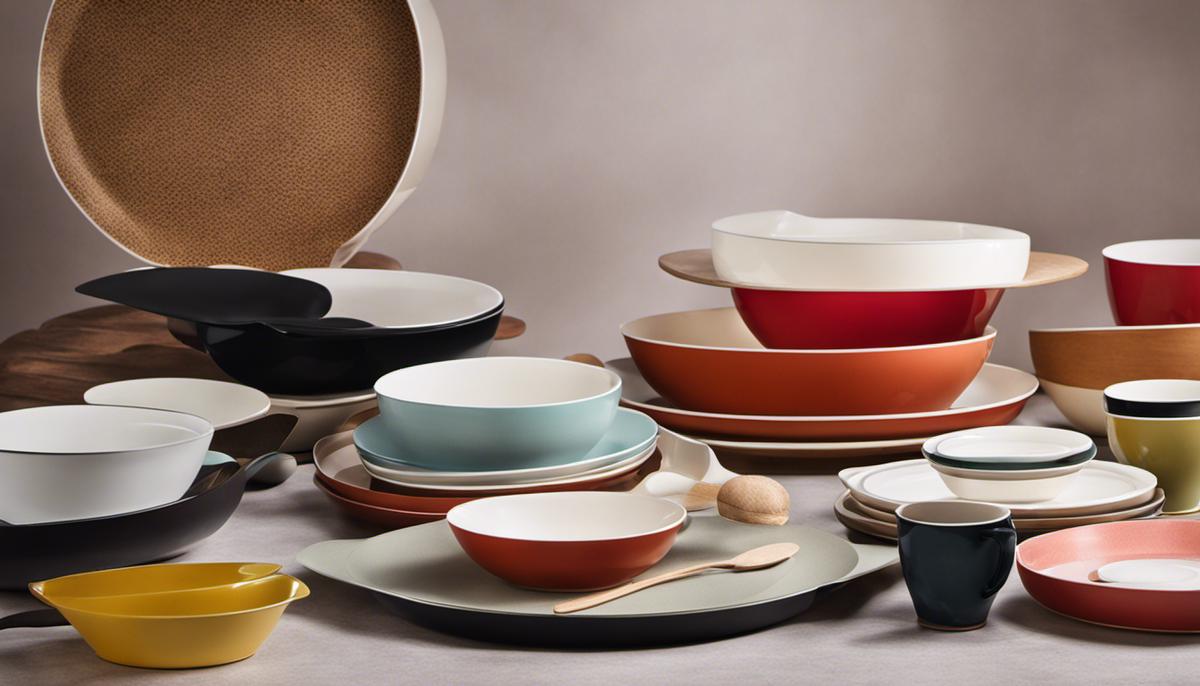
Wood Glue and its Adhesive Properties
Understanding Wood Glue and its Adhesive Properties
Wood glue is a type of adhesive made specifically to adhere to wood. It is very reliable when used to bond wooden surfaces together due to its strong adhesive properties.
Wood glue is composed largely of synthetic polymers or natural substances which provide its strong adhesive qualities. The polymer-based ones are more durable and typically resist heat, cold, and moisture better than natural based wood glues.
Factors that Influence the Adhesive Properties of Wood Glue
Certain factors such as the amount of glue used, the temperature and humidity of the environment, and the type of wood materials can influence the glue’s adhesive property.
Wood with a higher moisture content or more porous woods, for example, may absorb glue more readily, allowing for better adhesion.
Effectiveness of Wood Glue on Melamine
Melamine is a thermosetting plastic. It’s often used to provide a hard finish on top of a high-quality substrate.
The inherent issue with sticking wood glue to melamine lies in its slick, smooth surface which is intentionally designed to resist most adhesion.
Wood glue, as its name suggests, works most effectively on wood. It tends to form strong bonds with porous surfaces which absorb any liquid substance well, hence, making the bonding process efficient.
But when it comes to non-porous surfaces such as melamine, the glue struggles to adhere properly as it cannot penetrate into the material.
Therefore, while it’s technically possible to apply wood glue to melamine, the resulting bond is typically weak and prone to failure over time or under stress.
Alternative Adhesive Solutions for Melamine
| Adhesive Solution | Strength | Ease of Application | Drying Time | Durability | Cost |
|---|---|---|---|---|---|
| 1. Melamine Glue | High | Moderate | Short | Excellent | Moderate |
| 2. Epoxy Resin | Very High | Moderate | Medium | Excellent | High |
| 3. Contact Cement | High | Easy | Short | Good | Low |
| 4. Polyurethane | High | Moderate | Medium | Excellent | High |
| 5. PVA Wood Glue | Moderate | Easy | Short | Good | Low |
| 6. Cyanoacrylate | Very High | Easy | Very Short | Good | Moderate |
For melamine surfaces, a better adhesive option would likely be a specialty adhesive formulated for bonding with plastics or similarly non-porous surfaces.
Contact cement, for example, can be a viable solution, as it bonds well with both wood and plastic alike.
Epoxy resin, which is a strong adhesive that works well on a variety of surfaces including melamine, is another alternative.
This product is typically two-part, with a resin and a hardener that when mixed together form a bond stronger than the materials it’s connecting.
Preparation for Better Adhesion
Irrespective of the type of adhesive used, surface preparation is crucial. For better adhesion on melamine, it is recommended to lightly sand the surface with a fine-grit sandpaper.
This is to create a slightly rough surface for the adhesive to better grab onto. After sanding, you should thoroughly clean the surface to remove any dust particles.
Applying the adhesive properly and allowing enough curing time also play vital roles in the adhesion process.
In conclusion
While wood glue may not be the optimal choice for melamine due to its non-porous nature, with the right preparation and adhesives designed for such surfaces, successful adhesion can be achieved.

Best Practices for Gluing Melamine
Select the Right Type of Glue
When working with melamine, it’s important to select the right type of glue to ensure a strong bond.
Typically, wood glue is not recommended for melamine because it doesn’t adhere to the slick surface well.
Instead, professionals often opt for cyanoacrylate (CA) glue, two-part epoxy, or contact cement. These adhesives are designed to grip onto non-porous surfaces such as melamine, delivering a firm, lasting bond.
Prepare Your Melamine Surfaces
Proper preparation of your melamine surfaces is essential for successful gluing.
Before applying glue to the melamine, ensure that it is clean and free of any dust or debris.
A quick wipe with a damp cloth should suffice. Some experts also recommend lightly sanding the melamine to increase the surface area for the glue to bond with. If you choose to sand, use 220-grit sandpaper and remember to wipe away the dust before applying the glue.
Applying the Glue
When it comes to applying glue, remember that less is often more. For potent adhesives like CA glue or epoxy, a thin layer should suffice.
When using contact cement, apply a thin coat to both surfaces you intend to join, and allow it to dry before pressing them together.
This drying period allows the cement to achieve the appropriate level of tackiness, ensuring a strong bond.
Clamping
Once the glue has been applied and the pieces are positioned correctly, it’s time to clamp. Clamping pressure should be evenly distributed and maintained firmly for several hours, or as per the glue manufacturer’s instructions.
Be cautious not to apply excessive pressure to prevent the glue from squeezing out. Certain adhesives, such as cyanoacrylate glue, dry quickly, while others, like epoxy or contact cement, may require a longer curing time.
Finishing the Process
After the glue has been given sufficient time to cure, gently remove the clamps. If any excess glue has squeezed out from the sides, now is the time to clean it up using a utility knife or sandpaper. This step may vary depending on the specific type of adhesive you have used.
Remember, practice is key to perfecting your technique. With time, patience, and the right materials, you’ll find gluing melamine to be an achievable task.

Acquiring the right expertise to bond materials together is crucial and that includes understanding melamine and wood glue.
Knowing which adhesives work best with melamine and the necessary preparatory steps reaffirms that the successful completion of any project demands more than just the right tools—it demands the right kind of knowledge.
Hence, to master the art of bonding, it is essential to comprehend the features of both the adhesive and the material it is intended for.
This understanding ultimately leads to seamless and durable results in tasks involving these materials.
One of our articles –Titebond 3 Dry Time.
Related Questions
What is the best glue for melamine plates?
The best glue for melamine plates is a food-safe epoxy adhesive designed for bonding kitchenware. This ensures a safe and durable bond that won't affect the food on the plates.
Does Gorilla wood glue stick to melamine?
Gorilla wood glue is not recommended for bonding melamine. It's designed primarily for wood surfaces and may not adhere well to the smooth, non-porous surface of melamine.
Can wood glue be used on laminate?
Yes, wood glue can be used on laminate surfaces, but it's important to choose a laminate-specific adhesive for better adhesion and durability. Laminate adhesives are designed to bond well with smooth laminate surfaces.
What is the process of bonding materials, and why is it important?
Bonding is the process of joining two or more materials together using a suitable adhesive. It is crucial because it creates a strong and lasting connection between materials, allowing them to function as a single unit or structure.
What is an adhesive, and how does it work in material bonding?
An adhesive is a substance used to stick or bond different surfaces together. It works by forming a chemical or mechanical bond between the surfaces, providing cohesion and adhesion to keep them securely attached.
What is a synthetic resin, and how is it different from natural resins?
A synthetic resin is a man-made material created by combining various chemicals to produce a solid, durable substance. Unlike natural resins, which are derived from plants or animals, synthetic resins are manufactured through chemical processes.
What is a laminate coating, and why is it applied to wood surfaces?
A laminate coating is a thin layer of material, such as melamine, applied to the surface of wood to provide protection and enhance its appearance. It shields the wood from wear, moisture, and stains while adding aesthetic appeal.
What are some examples of furniture and wood-based products?
Furniture includes items like chairs, tables, cabinets, and shelves, typically made from wood or other materials. Wood-based products encompass a wide range of items such as plywood, particleboard, and fiberboard, used in construction and manufacturing.
Can wood glue be used for materials other than wood?
While wood glue is primarily designed for wood surfaces, some varieties of wood glue can bond other porous materials like paper and fabric. However, for non-wood materials, it's often better to use adhesives specifically formulated for those substrates.
How can I ensure a strong and durable material bond?
To achieve a robust material bond, ensure that the surfaces are clean, dry, and free from contaminants. Apply the adhesive evenly, follow the manufacturer's instructions for drying times, and clamp the materials together if necessary. Proper surface preparation and using the right adhesive for the materials involved are key to a successful bond.

